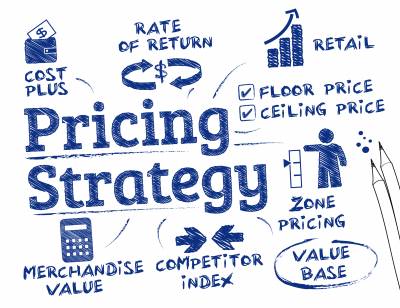 It was just a few years ago that the airline industry appeared to be teetering on the abyss. During this tumultuous period, many airlines merged or went out of business. Passengers had the upper hand and played one carrier off against another to their best advantage. One of the tools that helped salvage the industry and significantly boost its financial results has been pricing. The airlines have become very clever in monetizing every aspect of their business.
It was just a few years ago that the airline industry appeared to be teetering on the abyss. During this tumultuous period, many airlines merged or went out of business. Passengers had the upper hand and played one carrier off against another to their best advantage. One of the tools that helped salvage the industry and significantly boost its financial results has been pricing. The airlines have become very clever in monetizing every aspect of their business.
If you want food on a plane, you have to pay for it. If you wish to reserve a seat or obtain a seat with more legroom, you pay for it. On many airlines, you pay for every bag you check. If a passenger travels to a specific set of destinations on a repetitive basis, some airlines will create a package deal (i.e. offer a block of tickets at a preferred rate).
The size of a plane utilized is tailored to the volume of passengers on the route. Certain larger size planes are utilized on heavy volume routes during the day and then assigned to less frequent evening fights on lower volume routes. Smaller planes or small regional partner airlines are utilized for flights to remote locations.
Now, with dynamic pricing, airlines adjust their fares based on seat availability, time of day, day of the week and other variables. Low fares are available in the early stages to create critical mass. As a flight fills up, rates go up. Passengers are “manipulated” into taking flights at slower times of the day to balance loads and maximize profits.
The brokers of the freight industry, online travel agents such as Expedia, are also skilled at managing travel data and selling flights, hotel rooms and car rentals. The LTL freight industry is in the process of learning from the airline industry.
For years, U.S. and some Canadian carriers that specialized in cross-border LTL freight, utilized the National Motor Freight Classification system. This complex and cumbersome system grouped freight into so-called classes based on a set of variables (i.e. density and value, stow-ability, handling and liability etc.). Over the years, this pricing system was compromised as carriers arbitrarily changed the class of certain goods for selected customers, utilized a catch-all blended freight all kinds (FAK) pricing approach and provided heavy discounting to improve competitiveness. This imprecise, compromised pricing system played a significant part in the challenges that the industry faced during the Great Recession and as evidenced by industry consolidation over the past few decades. One only needs to look at Top 50 LTL carrier list from ten or twenty years ago or observe how many LTL carriers have been acquired by companies such as TransForce to see how much consolidation has taken place.
Over the past few years, an increasing number of LTL carriers have been experimenting with dimensional pricing. Using on dock scanners, these devices measure the precise dimensions of the freight. These scanners allow for much more accurate freight pricing. They are gaining widespread acceptance and utilization.
At a recent conference, I learned that about a dozen U.S. LTL carriers are designing and experimenting with dynamic pricing similar to what the airlines are doing and what Uber utilizes on passenger traffic at peak periods. (To learn more about dynamic LTL pricing, click on this video https://www.youtube.com/watch?v=nlR3T5cLVf8 ). Clearly there could be financial advantages in moving fuller schedules during slower periods, charging more to move freight during peak periods (i.e. end of the week, end of the month), particularly for LTL loads on lanes where back haul is a problem. Designing and successfully implementing dynamic LTL pricing will be a significant challenge.
Certainly one can draw comparisons between filling the number of seats on an airplane and filling the cubic capacity of a 53 foot trailer or container. However, freight shipments vary in packaging, cubic space occupied and stow-ability. Whatever dynamic pricing system is designed will have to reflect the realities and limitations of moving packages and pallets versus people. The implementation of dynamic LTL pricing would have a huge impact on supply chains and TMS software. Shippers will need to be able to determine if their customers can receive the requested shipment or alternate size shipments on various days of the week. Clearly there will be lots of push back along the way.
Similarly, the upgraded TMS software in years to come will have to be able to access the dynamic pricing tools of LTL carriers and make a determination as to customer acceptance of a change in delivery date and time, preferred carrier, preferred day of the week, alternate pick-up and delivery times. This is a major undertaking but could be extremely worthwhile to all parties. This big change in technology and freight rate pricing will be something to watch out for in the years ahead.
To stay up to date on Best Practices in Freight Management, follow me on Twitter @DanGoodwill, join the Freight Management Best Practices group on LinkedIn and subscribe to Dan’s Transportation Newspaper (http://paper.li/DanGoodwill/1342211466).



















